FIU professor and associate director of the Applied Research Center David Kadko and a team of 50 other scientists departed from Dutch Harbor, Alaska, in early August for a historic expedition to the Arctic.
Kadko is the chief scientist of the multimillion-dollar U.S. Arctic GEOTRACES initiative, which is part of an international effort to map the geochemistry of the Arctic Ocean.
The GEOTRACES team recently completed a 65-day journey aboard the U.S. Coast Guard icebreaker Healy through the western Arctic Ocean, returning to Dutch Harbor on Oct. 11. During their trip to the top of the world, they collected thousands of samples from the ocean surface, the sea floor, the atmosphere, ice, snow and sediments throughout the region.
They will then measure the amounts of various trace elements and isotopes – which include micronutrients such as iron, zinc and cobalt that are essential for life, and toxic contaminants such as arsenic and copper.
Team member Bill Schmoker, who is researching trace elements that are critical for marine life, wrote a daily blog detailing their journey and providing updates on the team’s progress. FIU News is currently producing a mini-documentary and full-length feature story on the entire Arctic journey.
Below are some of the highlights from their expedition:
August 11
Three days into their cruise, the crew began the day with a fantastic sunrise over the Bering Sea.
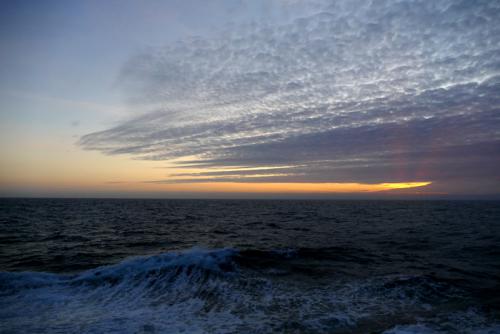
August 14
About 50 miles southwest of Lawerence Island in the Bering Sea, the Healy took up a position at a shelf station dubbed “Station #2” to take sampling in shallow water estimated to be around 130 feet deep.
The Coast Guard crew cast the conductivity, temperature, and depth (CTD) rosette into the sea to collect water samples against the backdrop of a sunset around midnight. The crew wrapped up the sampling around 1 a.m.
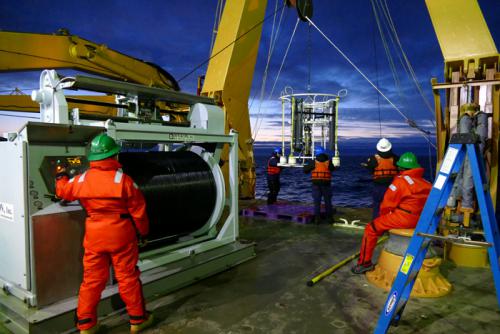
August 19
Earlier in the cruise, the team running the GEOTRACES rosette sampling realized that their winch was having trouble smoothly operating in cold temperatures. Heating units were ordered to help the winch get the job done in the cold.
Meanwhile, the Coast Guard crew identified a few critical parts needed for the ship as they continued to head north. The solution to getting all of this on board was to have a U.S. Coast Guard C-130 cargo plane deliver them.
The plane, based in Kodiak, Alaska, flew up to meet the ship in the North Chukchi Sea and parachuted the parts down into a waterproof cask that landed in the water and was retrieved by a one of the Healy’s small boats.
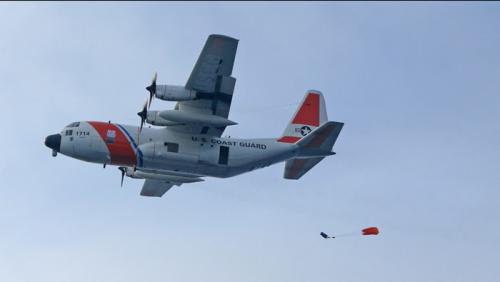
August 24
Shortly after the Healy crossed the 80°N latitude line, the crew of the ship was treated to the sight of a polar bear within 100 feet of the rear of the icebreaker.
The curious bear lingered near the ship for more than half an hour as the members of the crew and research team took photos and videos of one of the Arctic’s most recognizable animals.
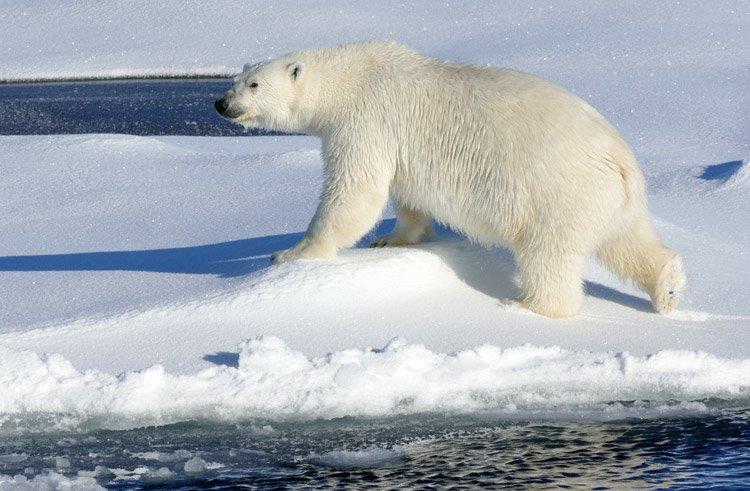
August 31
The crew stopped in the afternoon for a “Super Station,” meaning they will stop for approximately two full days to take more samples in waters more than 13,000 feet deep.
As the Healy continues chugging north toward the North Pole, here is a look of the ship breaking ice at approximately 86°N latitude in the Arctic Ocean.
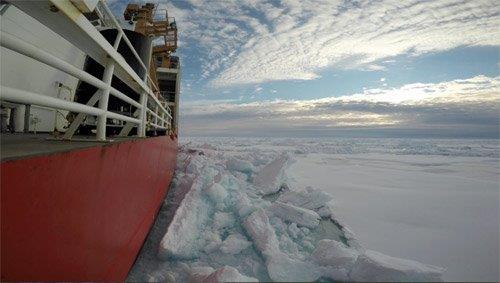
September 1
On the second day of a three-day trip to Alaska, President Barack Obama proposed speeding the acquisition and building of new Coast Guard icebreakers that can operate year round in the nation’s polar regions. The new icebreakers would replenish an aging Coast Guard fleet and help the United States gain a foothold in a rapidly changing Arctic that has opened opportunities for the expansion of shipping, tourism, mineral exploration and fishing operations.
A White House statement said that the “growth of human activity in the Arctic region will require highly engaged stewardship to maintain the open seas necessary for global commerce and scientific research, allow for search-and-rescue activities, and provide for regional peace and stability.”
The Healy is one of two fully functional icebreakers at the Coast Guard’s disposal, down from seven during World War II.
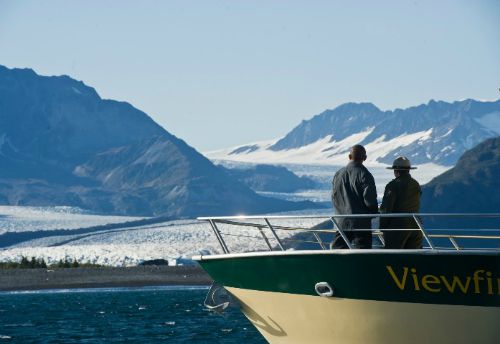
September 5
At 7:47 a.m. local time, David Kadko informed FIU News that the Healy had arrived at the North Pole, marking the first time a U.S. ship arrived unaccompanied to the pole.
In the photo below, the crew gathers on the ice in front of the Healy to receive commendations and hears a speech by the captain congratulating them on reaching the North Pole.
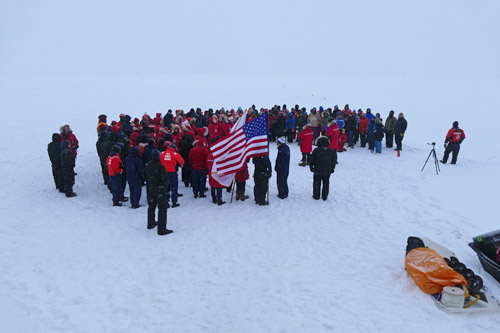
September 11
Professor Kadko out on the ice in the Arctic in front of the Healy. Over the course of a couple of days, the team has been collecting samples of “dirty ice” (ice with a lot of muddy sediment in it) and “clean ice” (to collect properly, sampling procedures are all designed to avoid contamination, particularly from trace metals).
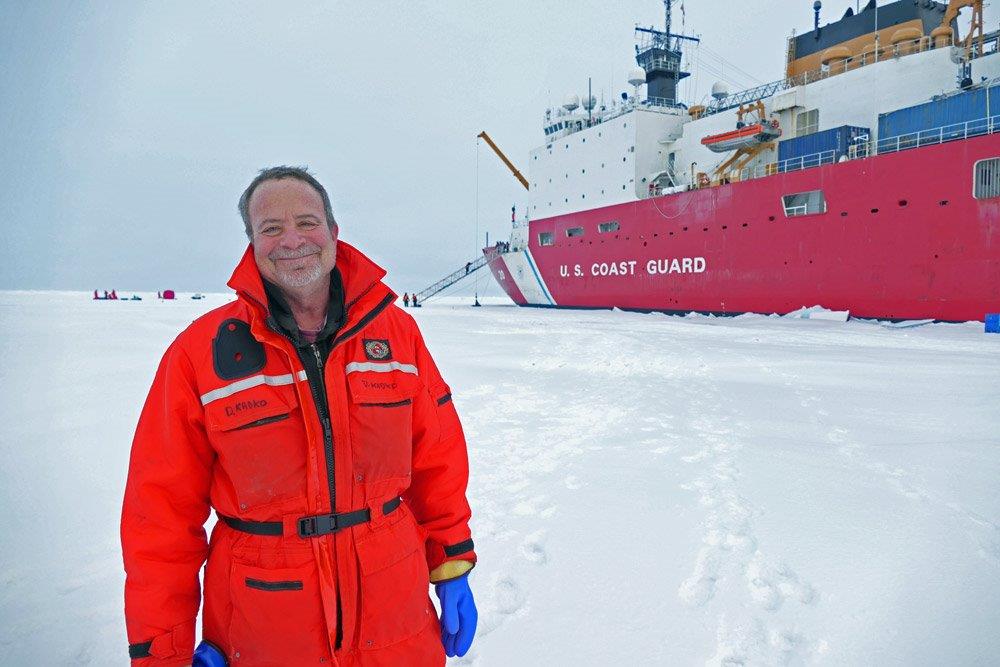
September 15
In the photo below, Kadko and Paul Aguilar preside over beryllium pumping using an Arctic Oven tent warmed by a portable heater to avoid freezing up their pump and hoses.

September 20
Members of the Coast Guard crew and science expedition team provided entertainment for their fellow shipmates during a talent show aboard the Healy. Dr. Bill Landing, who can be seen on the far left side of the photo, brings his saxophone with him on just about every trip he goes on.
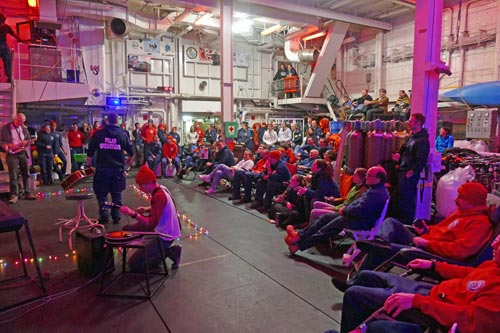
October 1
Melissa Miller, a nutrient chemist at the Scripps Institute of Oceanography, starts a batch of water samples through the flow-through nutrient sampling system inside one of the ship’s labs. Miller is sampling the chemicals in the Arctic Ocean that phytoplankton can use for growth, including phosphate, nitrate, nitrite and silicate.
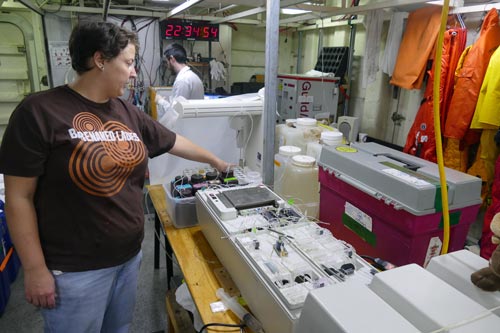
October 4
The crew was treated to an aurora display in the evening, Schmoker described the scene: “We also had a phenomenal auroral display… with starry skies splashed green with sheets and ropes of plasma. One curtain in particular amazed us with successive bright vertical streaks sweeping rapidly along the length of the feature. While green has dominated the displays, the crew out working on a beryllium pumping cast around 2 a.m. saw an eruption that included pink and purple fringes on the bottom of the brightest ribbons.”
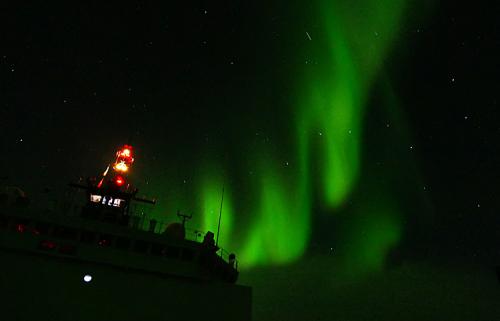
October 8
After an unsuccessful multicore sampling operation several days earlier, the team tried again with better results on Oct. 9, recovering samples from the sea floor on the Chukchi Shelf. Inside one of the multicore tubes that retrieved mud from the sea floor, a clam shell came along with it.
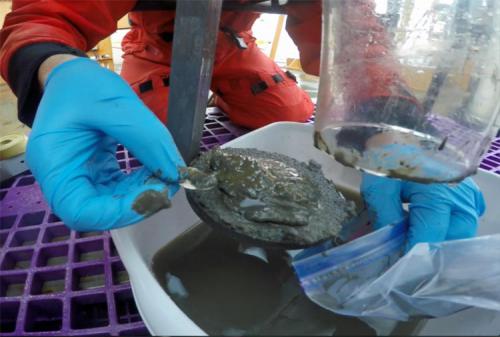
October 11
The GEOTRACES team’s journey came to a close a half day earlier than scheduled on Oct. 11 as the Healy returned to Dutch Harbor, Alaska, where their expedition began. With strong tailwinds behind them and the cancellation of their last stations in the Bering Strait due to higher seas than expected, the crew made excellent time back to port.
The team spent 64 days at sea, covering over 5,000 nautical miles while collecting thousands of individual samples and terabytes of data across 66 science stations throughout the western Arctic Ocean.

Check this post frequently for more updates from the U.S. Coast Guard icebreaker Healy. For more information on the U.S. Arctic GEOTRACES expedition, visit Bill Schmoker’s PolarTREC blog.